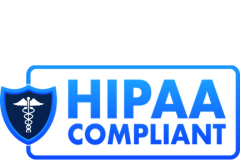Recovering from surgery is a critical time when your body needs proper care and attention to heal. Pain and discomfort are common during this period, but with the right strategies, they can be effectively managed to ensure a smoother recovery process. This guide offers insights into understanding post-surgical pain and actionable steps to manage it effectively.
Understanding Post-Surgical Pain
Post-surgical pain varies depending on the type of surgery, the individual’s pain tolerance, and overall health. It can range from mild discomfort to intense pain, often peaking in the first 48-72 hours after surgery. While pain is a natural part of the healing process, unmanaged pain can hinder recovery and negatively impact physical and emotional well-being.
Common types of post-surgical pain include:
- Incisional Pain: Pain localized around the surgical site due to tissue healing.
- Referred Pain: Discomfort in areas not directly related to the surgery, such as shoulder pain after abdominal surgery.
- Muscle Pain: Often caused by positioning during surgery or immobility during recovery.
For a personalized care plan, explore the options offered by On Call Nursing’s skilled nursing services.

Effective Ways to Manage Pain and Discomfort
- Follow Your Doctor’s Pain Management Plan
Always follow the medication schedule prescribed by your healthcare provider. Over-the-counter medications like ibuprofen or acetaminophen may also help in managing pain. For advanced care, skilled nurses can assist in managing prescriptions and monitoring side effects. - Incorporate Gentle Movement
Light movement approved by your doctor, such as short walks or stretching, can improve circulation and reduce stiffness. For more post-surgical recovery tips, visit the American Physical Therapy Association. - Use Cold and Heat Therapy
Apply cold packs to reduce swelling and numb pain during the first few days. Afterward, heat therapy can be used to relax muscles and improve blood flow to the surgical site. Always consult with your doctor to determine the right timing for these therapies. - Focus on Nutrition
A balanced diet rich in proteins, vitamins, and minerals promotes tissue repair and reduces inflammation. Hydration is equally important to prevent side effects from medication, like constipation. Learn more about post-surgery dietary recommendations from the National Institute on Aging. - Practice Breathing Exercises and Relaxation Techniques
Pain can often lead to stress, which in turn worsens discomfort. Techniques like diaphragmatic breathing, meditation, or guided imagery can help manage pain by calming the nervous system. Explore resources on relaxation techniques through the American Pain Society. - Adjust Your Sleeping Position
Rest is vital for healing, but finding a comfortable sleeping position can be challenging. Using pillows to support incisions or elevate certain body parts can ease discomfort. For example, elevating your leg after knee surgery can reduce swelling and pain. - Stay Ahead of the Pain
Don’t wait until the pain becomes unbearable to take action. Follow your medication schedule and use complementary therapies proactively. On Call Nursing can assist with pain management strategies tailored to your recovery.
When to Seek Medical Help
While some level of discomfort is expected, certain signs may indicate complications and require immediate attention:
- Persistent or worsening pain despite medication.
- Redness, swelling, or warmth around the surgical site, which could indicate an infection.
- Difficulty breathing or chest pain, which may signal a blood clot.
- Nausea, vomiting, or dizziness, especially if you’re taking prescription painkillers.
Visit the CDC’s Surgery and Recovery Guide for additional resources and advice.
Building a Support System
Recovering from surgery is not something you should face alone. Family, friends, or professional caregivers can provide invaluable support during this time. Caregiving services can assist with daily tasks, monitor your recovery, and ensure you’re following your pain management plan.
Healing with Comfort and Confidence
Pain is an inevitable part of recovery, but it doesn’t have to control your healing journey. By following these strategies and working closely with your healthcare provider, you can effectively manage pain and discomfort while giving your body the care it needs to recover. Every small effort—whether it’s taking a walk, eating a nutritious meal, or practicing deep breathing—brings you one step closer to feeling like yourself again.
Remember, recovery is a process that requires patience, persistence, and support. With the right approach, you can heal comfortably and confidently, ready to embrace the next chapter of your life.





